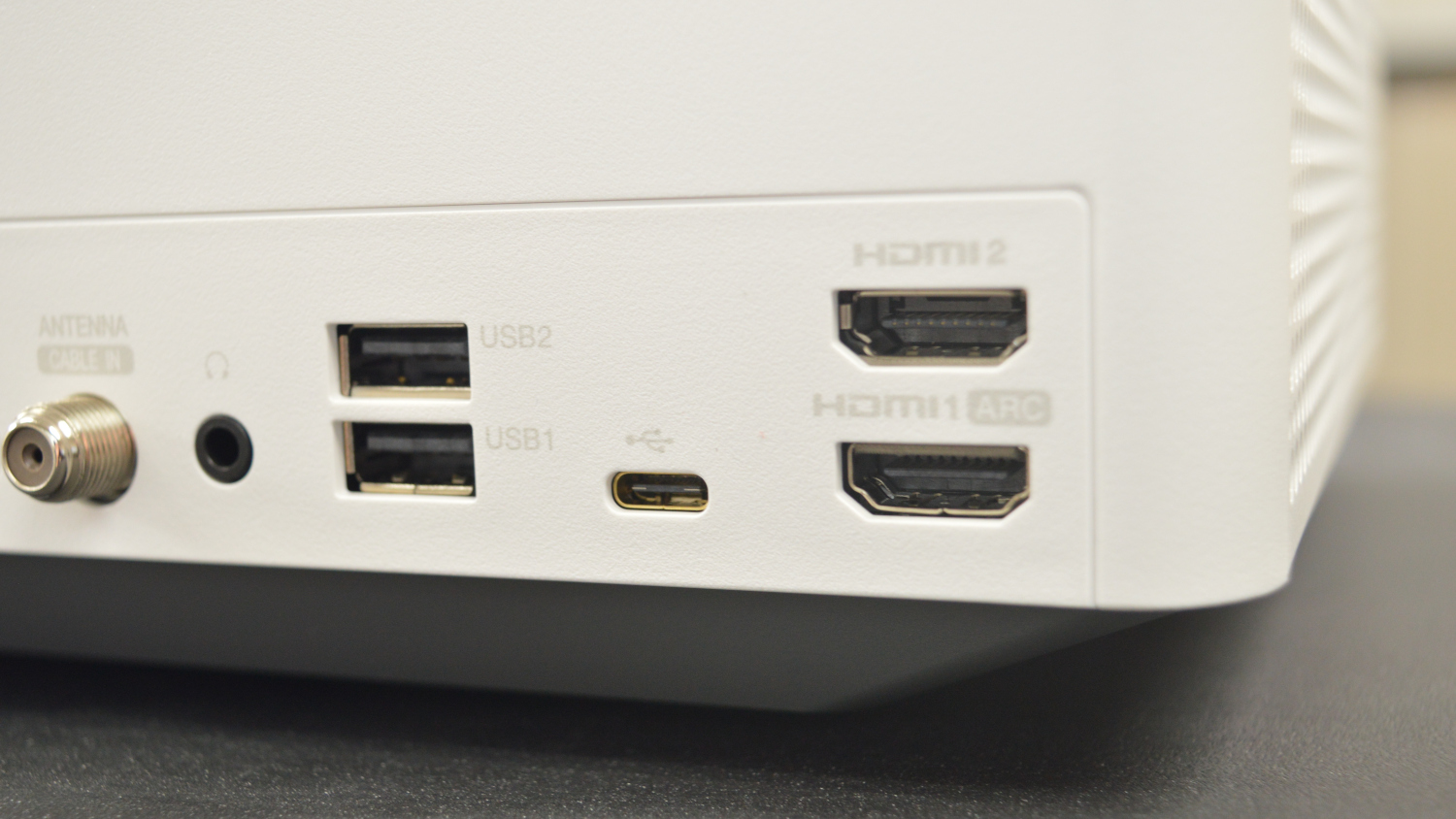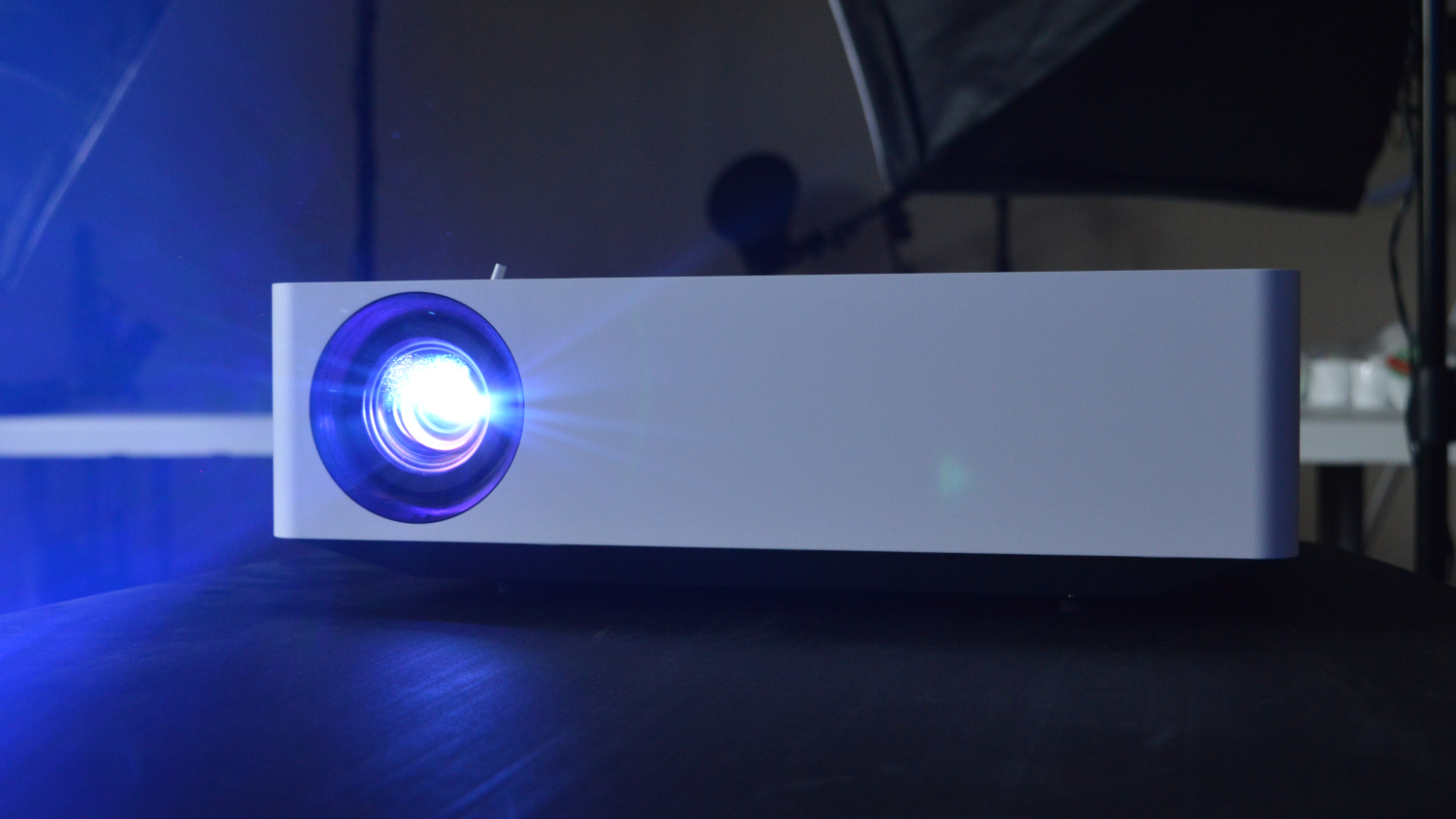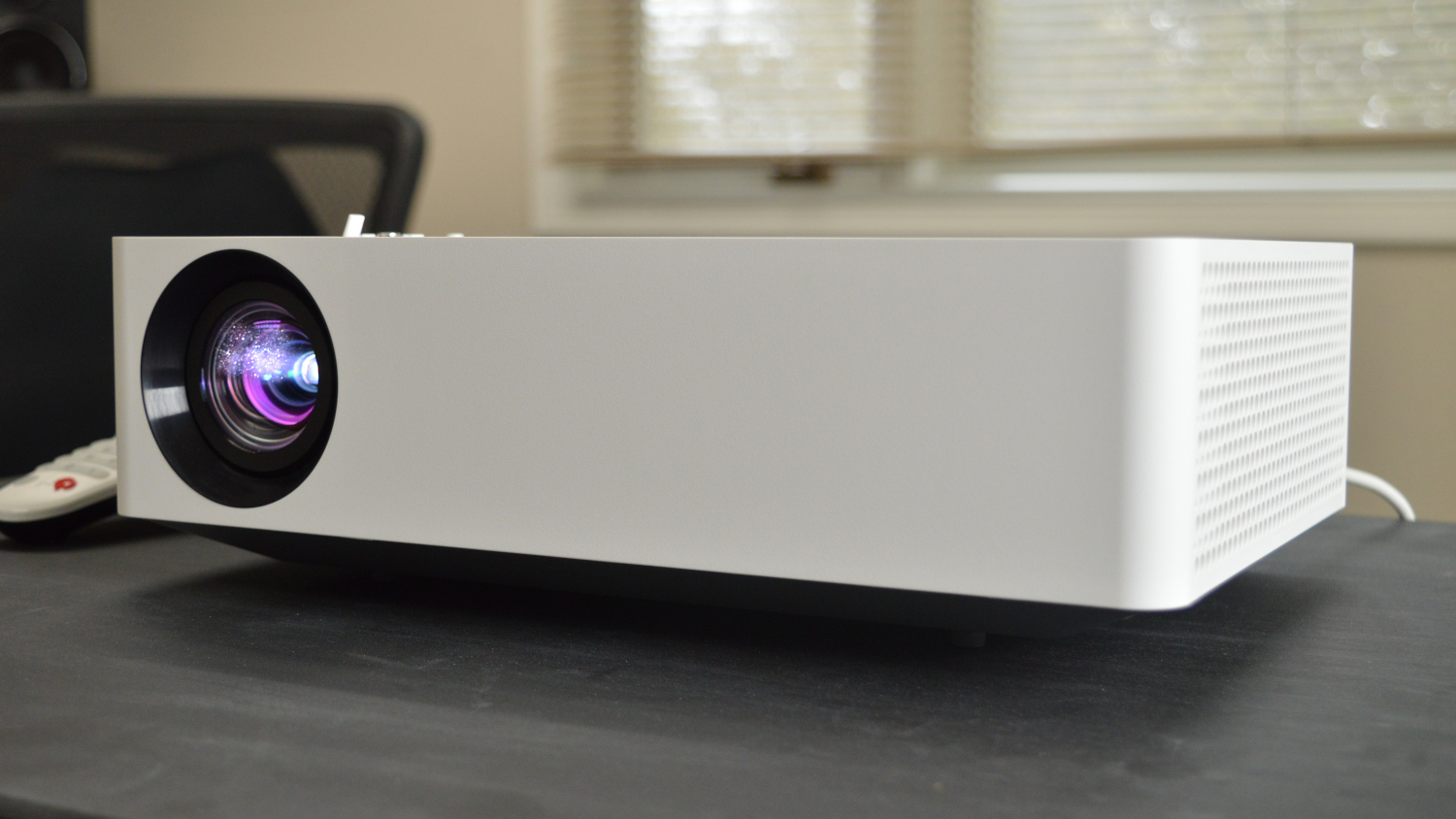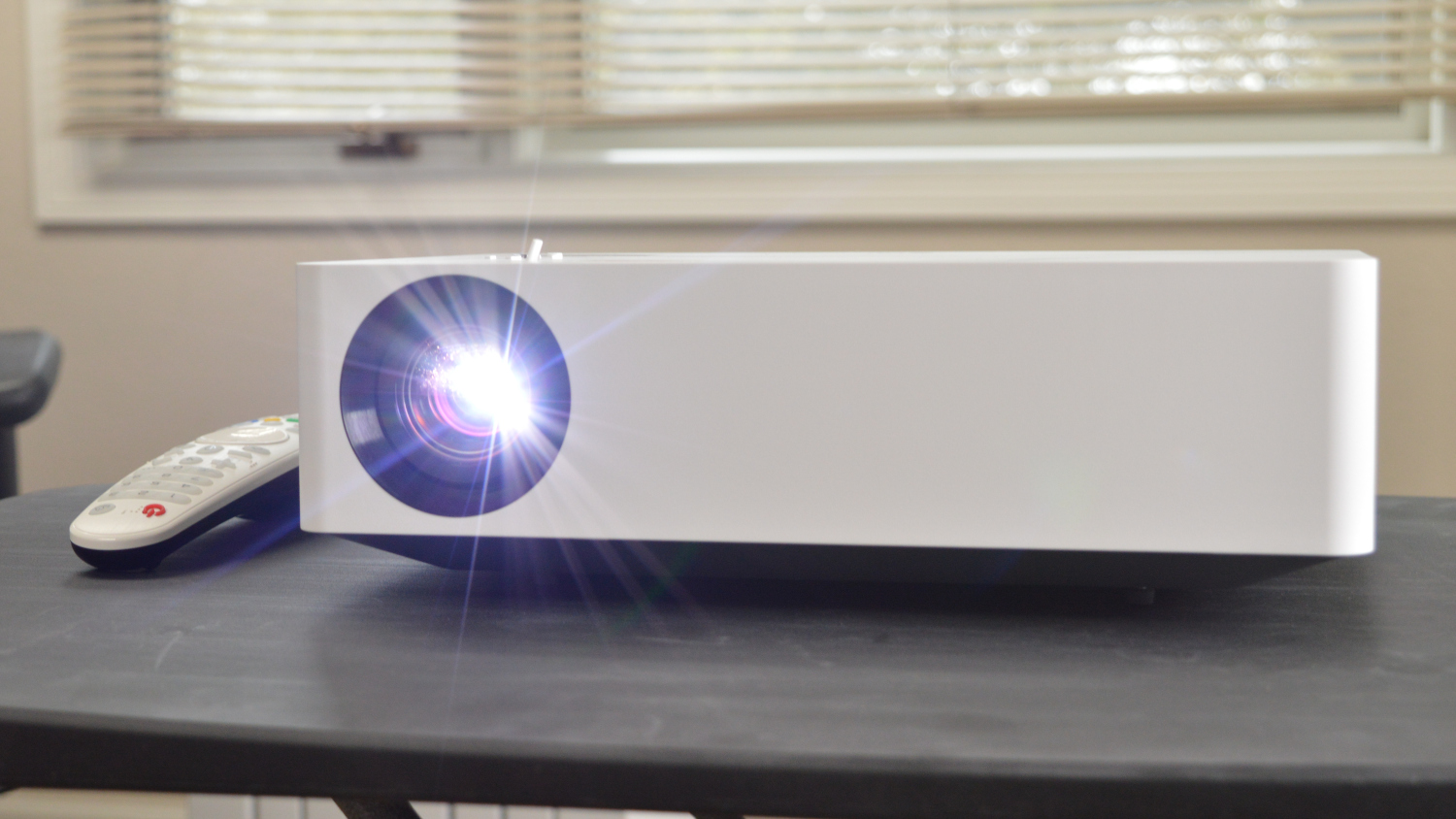TechRadar Verdict
The LG HU70LA 4K CineBeam Projector - called the HU70LS in the UK - offers a solid image quality and 4K resolution at a relatively affordable price. Ultimately, while it's the not the best 4K projector on the market due to some sound issues, we think it’s one of the better home projectors in its price range.
Pros
- +
Native 4K at a low price
- +
LG WebOS is great
- +
Compact design
Cons
- -
Speakers aren’t great
- -
Some fan noise
Why you can trust TechRadar
4K TVs have been available for some time now, however 4K projectors still aren’t all that commonplace - and those that are available are relatively expensive.
To help combat the idea that every 4K projector needs to cost an arm and a leg, LG recently launched one of the more affordable options in the form of the new LG HU70LA (HU70LS in the UK) CineBeam 4K projector, available for $1,799 (£1,650, around AU$2,900). That's not exactly cheap, but compared to other native 4K projectors that cost three to five times as much, it's a downright bargain.
Of course, with any “budget” product, there’s always a fear of cutting corners. Does the LG HU70LA avoid those issues, or does it simply represent the fact that 4K projectors are getting cheaper without the lowering of quality?
We put the LG HU70LA to the test to find out.
Design
The LG HU70LA is incredibly compact - which makes sense considering the fact that it was built for the home. The projector measures in at 12.4 inches wide, 8.3 inches deep, and 3.7 inches thick (31.5 x 21 x 9.4 cm). That makes it easy to place on a smaller table, or mount from the ceiling.
The design is pretty minimalistic too, ensuring that it should look great in any home: On the top, you’ll get a zoom control, basic software controls and a power button. On the back, however, is where most of the action happens - you’ll find two HDMI ports, two USB ports, a USB-C port, an antenna input, ethernet port, and optical output. It’s a solid selection, and that highlights the fact that for most who buy this projector, it’ll replace the TV. On each side of the projector, there are air vents and speakers.
The projector comes with LG’s Magic Remote, and it’s generally pretty easy to use. You can use the remote to point at menu items if you want, or simply use the direction controls to make selections. The remote is around six inches long, and has controls for channel, volume, settings, and more. There’s also a microphone button for voice controls, and quick access buttons for Netflix and Amazon Prime Video. The remote isn’t as simple as a Roku or Apple TV remote, but you’ll get used to it.

Setup and software
Setting up the LG HU70LA is a breeze, though your setup process may be a little more difficult if you want to mount the projector from the ceiling. We aren’t doing that, so all that was involved in physically setting up the projector was place it on a table around eight feet from the wall, turning the projector on, and adjusting the zoom switch to best fit our projection screen.
Setting up the software is relatively easy. The projector comes with LG’s WebOS operating system, which is easy to use and supports most major streaming services. Out of the box, the projector comes with Netflix, Amazon Prime Video, Google Play Movies & TV, and YouTube pre-installed - but you can install others too.
Unfortunately, it does not seem as though Disney Plus and Apple TV Plus aren’t available to the projector, so if you use those services a lot, you may need to buy an external streaming device.
As mentioned, the remote supports voice controls too, which is a nice touch. You can use the microphone to switch apps, change the volume, and more. Not only that, but the projector actually has Google Assistant built into it, so if you’re already in Google’s ecosystem, you’ll easily be able to control smart home devices and find out information from the web.

Performance
Right out of the box, it’s clear that this is an excellent projector for the price, offering excellent color accuracy and detail considering the resolution. The projector has a 4K resolution, as mentioned, plus it supports HDR 10, so you should be able to enjoy content the way it was supposed to be enjoyed. It would have been nice for more HDR standards to be supported, but it’s also a little hard to complain at this price point. Apart from that, you’ll get a contrast ratio of 150,000:1, and a brightness of up to 1,500 lumens.
The brightness and contrast ratio isn’t as high as it could be, but for most it won’t be a big deal. The result of these specs is that the projector isn’t quite as vivid and bright in rooms with more ambient light, and black levels aren’t as deep as we would have liked. Still, most people will be using the projector in rooms with some ambient light, and thus unable to really appreciate ultra deep black levels anyway. Sure, you may be able to find projectors at a similar price with deeper blacks, but many don’t have a 4K resolution, let alone smart features and the ultra compact build.
While we did do some testing in pitch dark rooms, the majority of our testing was actually done in a room with some ambient light. Generally, most people who buy this projector will be using it in the same way. Those who are putting together a super serious home theater will want to spring for a more expensive projector, and as such this projector may be used in a family room or something similar.
In SDR, the projector offers a range of different modes, and they’re all pretty good. Modes include Vivid, Standard, Cinema, Sports Game, HDR Effect, Expert (Bright Room), and Expert (Dark Room). Generally, Cinema seemed to be the most color-accurate mode, however for a little more brightness Vivid isn’t bad, and if you want even more brightness you can use Standard mode. Generally, colors looked a little washed out in both Vivid and Standard, and as a result we did most of our testing in Cinema mode.
In HDR, you won’t get quite as many modes, but there’s still a solid selection. Here, modes include Vivid, Standard, Cinema Home, Cinema, and Game. Again, we generally kept the projector on Cinema mode. HDR picture quality was actually quite good, with better contrast and bright colors. The projector easily offered a detailed image in 4K, making for an immersive experience throughout.
By default, LG’s motion-smoothing tech, TruMotion, is disabled, but if you really want to use it, you can enable it in settings. This might come in handy for things like sports, however if you’re unsure of using it, we recommend simply keeping it off.

Sound quality
As mentioned, the LG HU70LA has speakers built into it, but these should generally only be used as a last resort. If you can, we strongly recommend at least buying a soundbar or a pair of speakers to use with the projector, and if you have a higher budget then a larger sound system will make your experience a lot more immersive.
Generally, the speakers lacked bass response and any high-end clarity or detail. Voices shone through a mix fine, but again, don’t expect much. That’s not all that surprising though - most people who buy this projector will be buying it as part of a larger home theater setup.
The projector does have some fan noise, but it’s not over the top - and you’ll forget about it if you’re watching something with any volume. There’s an audible difference between the projector with energy savings or without them - but there’s also a difference in brightness, and considering the fact that it’s not an overly bright projector anyway, you may not want to mess with those settings.

Final verdict
The LG HU70LA CineBeam projector has a lot to offer for a projector in this price range. It’s not the brightest out there, and there are projectors with a higher contrast ratio, but if you’re looking for a solid compact option at a price that's similar to a big-screen 4K TV then the HU70LA is definitely the way to go.
- Looking for more options? Check out our list of the best projectors
- Take a look at our LG discount codes for the best LG offers and savings.
Christian is a writer who's covered technology for many years, for sites including Tom's Guide, Android Central, iMore, CNN, Business Insider and BGR, as well as TechRadar.
